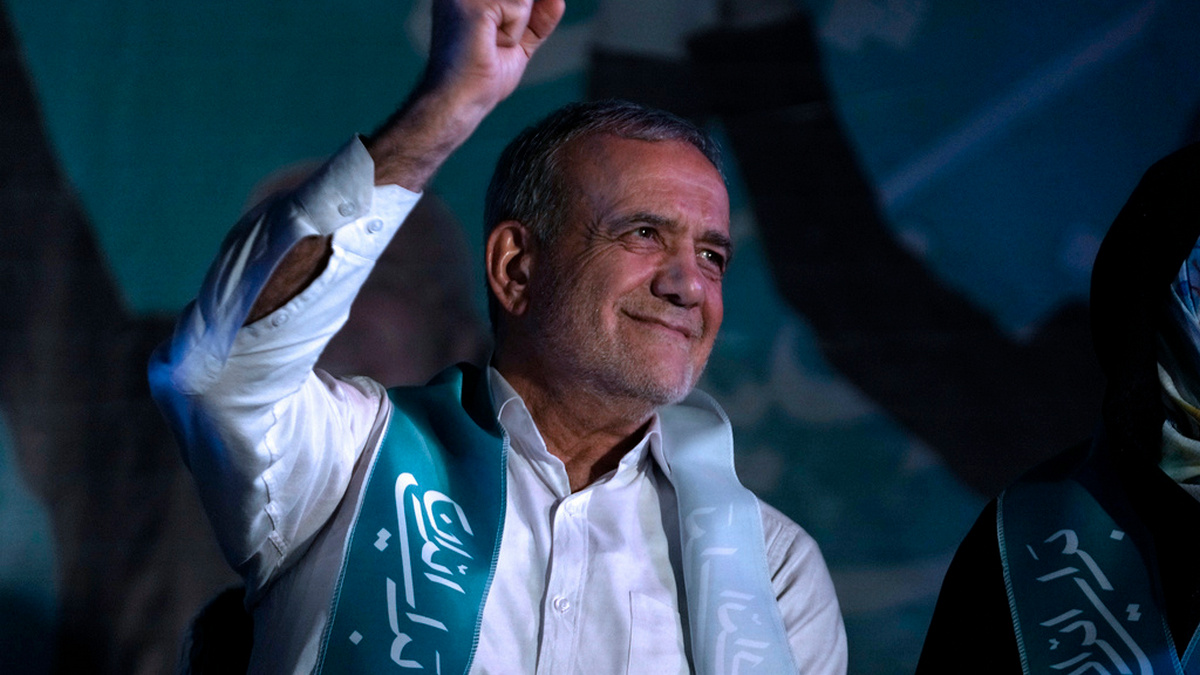Iran will soon have a new president.
Masoud Pezeshkian has defeated Saeed Jalili in the run-off necessitated due to the demise of then president Ebrahim Raisi in May.
“By gaining majority of the votes cast on Friday, Pezeshkian has become Iran’s next president,” Iran’s interior ministry said.
Pezeshkian received more than 16 million votes and Jalili more than 13 million out of about 30 million votes cast, electoral authority spokesman Mohsen Eslami said, adding that voter turnout stood at 49.8 percent.
Pezeshkian, a heart surgeon and lawmaker, is a Centrist and a reformist.
But what do we know about the 69-year-old Pezeshkian?
Let’s take a closer look:
Pezeshkian was born on September 29, 1954 in Mahabad in northwestern Iran.
Pezeshkian’s father was ethnically Azeri and his mother was Kurdish.
He speaks Azeri and has long focused on the affairs of Iran’s vast minority ethnic groups.
As per YNetNews, Pezeshkian completed his diploma in 1973.
He then began taking an interest in medicine during military service in Zabol.
During the Iran-Iraq war in 1980s, Pezeshkian, a combatant and physician, was tasked with the deployment of medical teams to the front lines.
He then became a heart surgeon and served as the head of the Tabriz University of Medical Sciences.
Impact Shorts
More ShortsHowever, personal tragedy shaped his life after a 1994 car crash killed his wife, Fatemeh Majidi, and a daughter.
The doctor never remarried and raised his remaining two sons and a daughter alone.
Pezeshkian entered politics first as the country’s deputy health minister and later as the health minister under the administration of reformist president Mohammad Khatami.
Pezeshkian served as health minister in Khatami’s second term from 2001 to 2005.
Almost immediately, he found himself involved in the struggle between hard-liners and reformists, attending the autopsy of Zahra Kazemi, a freelance photographer who held both Canadian and Iranian citizenship. She was detained while taking pictures at a protest at Tehran’s notorious Evin Prison, was tortured and died in custody.
In 2006, Pezeshkian was elected as a lawmaker representing Tabriz. He later served as a deputy parliament speaker and backed reformist and moderate causes, though analysts often described him more as an “independent” than allied with the voting blocs.
That independent label also has been embraced by Pezeshkian in the campaign.
As per YNetnews, Pezeshkian in Parliament represented the Tabriz, Osku and Azarshahr electoral district.
He was also first deputy speaker from 2016 to 2020.
He is also a teacher of the Quran and a reciter of the Nahj al-balagha – a significant text for Shia Muslims.
Yet, Pezeshkian at the same time, honoured Iran’s paramilitary Revolutionary Guard, on one occasion wearing its uniform to parliament.
He repeatedly criticized the United States and praised the Guard for shooting down an American drone in 2019, saying it “delivered a strong punch in the mouth of the Americans and proved to them that our country will not surrender.”
In 2011, Pezeshkian registered to run for president, but withdrew his candidacy.
In 2021, he found himself and other prominent candidates barred from running by authorities, allowing an easy win for Raisi.
In 2022, Pezeshkian demanded clarification from authorities about the death of Mahsa Amini, a woman who died in custody after she was arrested for allegedly violating a law restricting women’s dress. Her death sparked months of unrest across the country.
“We will respect the hijab law, but there should never be any intrusive or inhumane behaviour toward women,” Pezeshkian said after casting his vote in the first round.
At a Tehran University meeting last month, responding to a question about students imprisoned on charges linked to 2022-23 unrest, Pezeshkian said “political prisoners are not within my scope, and if I want to do something, I have no authority.”
With inputs from agencies


)

)
)
)
)
)
)
)
)



